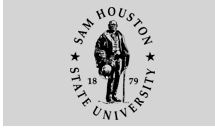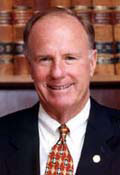| |
||||
 |
|
|
 |
 |
| |
||||
| |
||||
| |
||||
| |
||||
| |
||||
| |
||||
| |
||||
|
During the past two years I have had the opportunity to give
many talks about Sam Houston State University. Much of the
information provided in these talks is basic factual data.
Time and time again I have been impressed by the overwhelmingly
positive impact of simply conveying "today's facts"
about Sam Houston State. I thought I would do the same for
our local constituents by sharing those most recent facts
with you through this column, hoping you, too, would find
much of it informative.
Even with the rise in admission standards, the actual number of applications continues to increase. Sam Houston State is a member of the Texas State University System. Other four-year universities in the System are: Angelo State University, Lamar University, Sul Ross State University and Texas State University - San Marcos. Our system is the third largest in Texas, behind the University of Texas and Texas A&M systems. We are the 12th largest among the 36 four-year state universities in Texas. As of September 1, 2003 we had 1,222 full-time faculty and staff employed at SHSU. Freshmen are required to live on campus, and many upper classmen choose to do so. This fall we have 2,890 (22 percent) of our students living on campus. Sam Houston State's four academic colleges have the following enrollments by percentage:
Minority students constitute 26 percent of our student body. This compares with a national minority student enrollment of 28 percent, and a minority student enrollment in Texas of 40 percent. Women constitute 59 percent of our student body, a number that is slightly above both national and Texas averages. Seventy-six percent of our students are full-time. Over 50 percent of the students who graduate from SHSU are the first in their families to receive a college degree.. Even though 85 percent of our students are undergraduates, graduate student enrollment has been the fastest growing segment of our student population in recent years -- a total of 58 percent over the past five years. Approximately 54 percent of our students receive financial aid in the form of scholarships, grants, loans, etc. Over $35 million in financial aid flows to SHSU students each year. Sam Houston State offers 84 undergraduate and 46 master degree programs. With four, soon to be five, doctoral programs, we are now classified as a Carnegie "Doctoral Intensive" Institution, which is the second highest ranking available to universities nationwide. Only six of the 36 public Texas universities have a Carnegie classification higher than SHSU. Eighty-nine percent of classes at SHSU are taught by full-time faculty. Eighty percent of our faculty have doctorates or the equivalent for their discipline. Our student to professor ratio is 21:1. When we started in 1879 we had 110 students and 5 professors, for a 22:1 student to professor ratio, which is evidence that some things actually do not change that much over time! Our total annual budget for the last academic year was $146 million. Only 35.6 percent of our budget was state appropriated. The remainder we raised through tuition, fees, grants, gifts and auxiliary activities. This year our 2003-04 state appropriation was even less. If all other revenue sources remain stable by academic year-end, the proportion of state appropriation in terms of percentage will drop yet again -- to 34.3 percent. All indications are that state appropriations to higher education in Texas, as in most states, will continue to decrease in the future. This fall 2003 semester, it cost a Texas resident the following to take 12 semester credit hours at SHSU:
We expect to see some significant changes in the overall marketplace as Texas state universities begin to exercise their plans to make up for the loss in state appropriations by taking advantage of the recent tuition deregulation. In effect, universities will pass the cost of operations on to the student consumer. Sam Houston State will always remain as competitive as possible in this regard. Sam Houston State University has more than 63,000 living alumni scattered all over the globe. The alumni giving rate is 3 percent, up from 1 percent one year ago. This increase can be attributed primarily to our phone-a-thon that was begun in fall 2002. The cost of new campus construction and projects coming on line from 2003 to 2007 will be in excess of $94 million. I will present more detail on these projects in a subsequent column. The picture of Sam Houston State today is reflective of the great work that has been done here by so many outstanding faculty and administrators in years past, as well as the fine efforts of those who are here today. Finally, factual data, however informative, does not begin to present the full picture of Sam Houston State. The real picture of the University is presented in the everyday activities that occur, such as the professional instruction of our students, the scholarly and creative activities that are ongoing, and the great service that our faculty, staff and students provide in their professions and to the community. Sam Houston State University, as we approach our 125th year of operation in 2004, is no longer the "college on the hill'. We've become a large, complex, and high quality university with a great heritage, a present to be proud of, and a focus on the future. I truly believe we are "on the move."
- END - SHSU Media Contact: Frank
Krystyniak This page maintained by SHSU's Office of Public
Relations |
Director: Frank Krystyniak Assistant Director: Julia May Writer: Jennifer Gauntt Located in the 115 Administration Building Telephone: 936.294.1836; Fax: 936.294.1834 |
